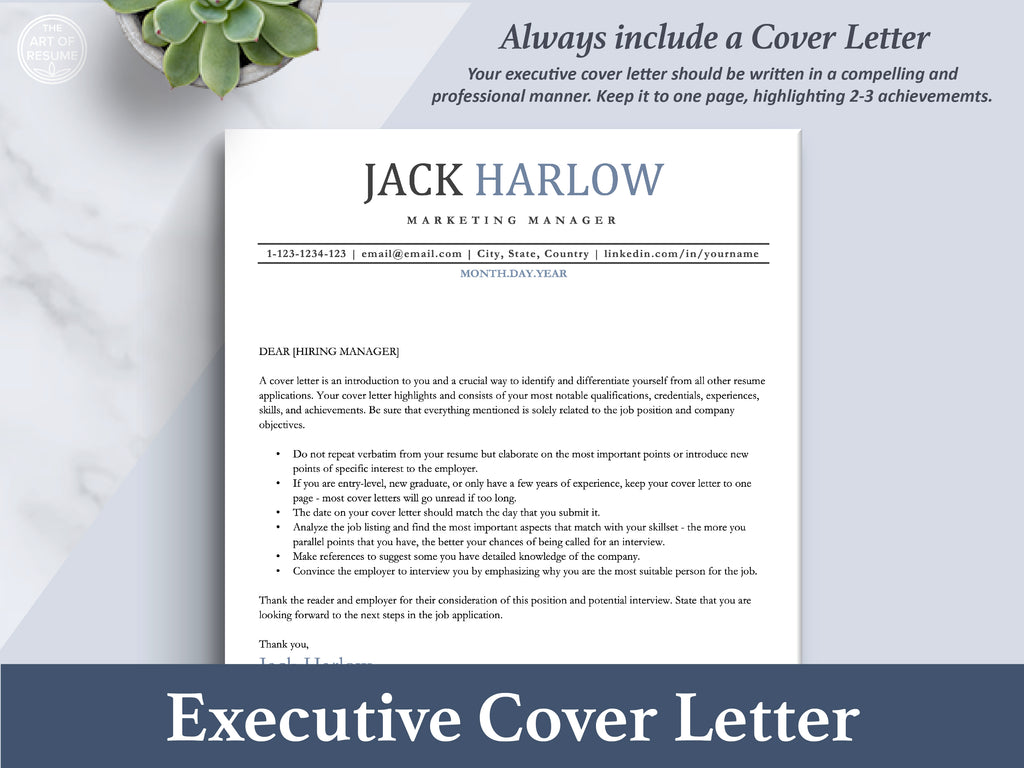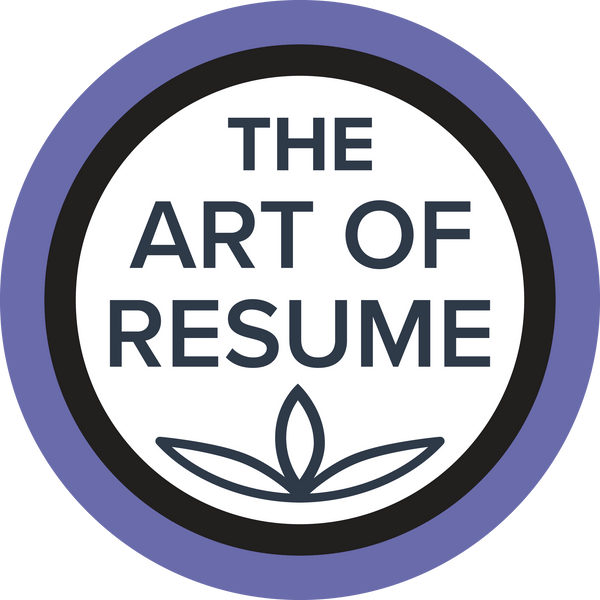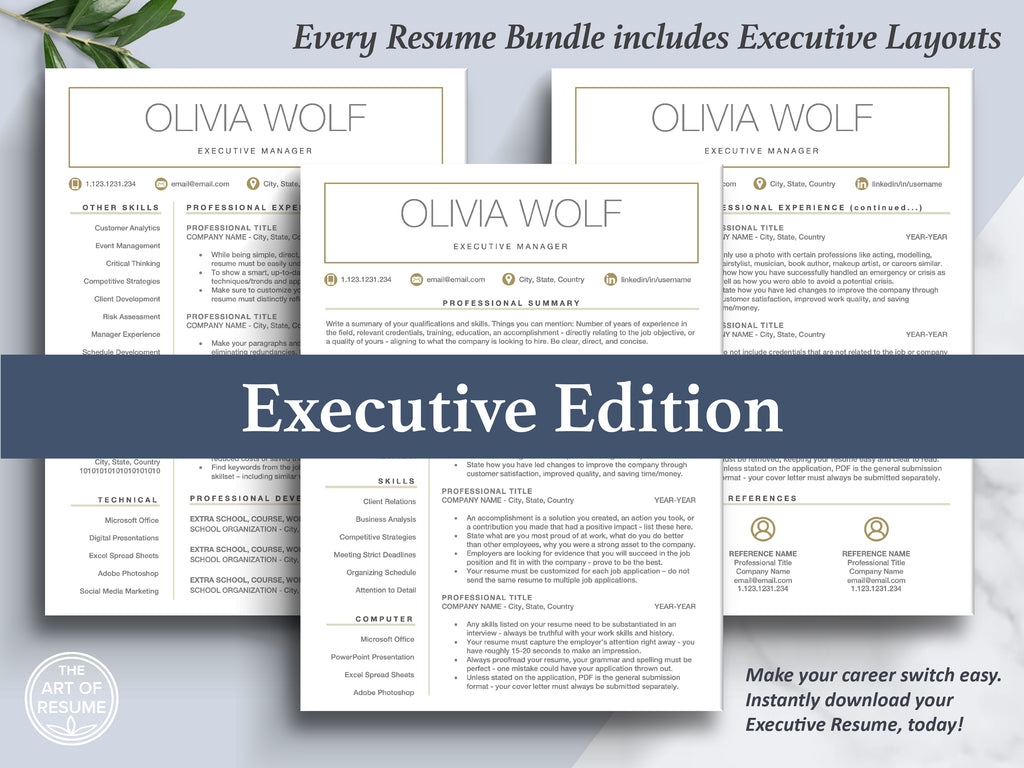Considering moving up to a higher-level career? Your executive resume is the first and most important step in achieving this goal. However, making your resume that highlights your experience and skills is a challenge. Creating an executive resume that gets you noticed is a greater feat.

But don’t worry! In this guide, we will break down how to craft the perfect executive resume.
Moreover, we will also discuss formatting, relevant information to add, and all the other necessary details to help you craft a stellar executive resume.
Let’s begin with the basics.

What is an Executive Resume
Executive resumes typically represent the top and most sought after positions like Chief Executive Officers (CEO), C-Level positions, board members, directors, or general managers (GP). The company looking to fill these sought after positions want information on how you’ll solve current and future business problems. The chief information officer (CIO) candidate may help solve enterprise resource planning difficulties, the general manager candidate could help solve the struggling division, and the financial manager candidate could raise funds under tough conditions - they all have important goals for the company's future.

Like any resume, an executive resume must quickly highlight your greatest accomplishments, vital work skills, and reasons why the employer should consider you as their best option for the job position. Your career story in a nutshell. Your personal resume branding must paint you as a highly sought after and desirable candidate. Market yourself accordingly.
How is an Executive Resume Different?
There are a few significant distinctions between writing an executive CV and resumes for lower employment levels. Understanding these differences will allow you to write a captivating an executive resume that successfully highlights your qualifications and accomplishments.
1. Resume Length
Unlike traditional resumes, executive resumes typically exceed the standard one-page limit. In order to apply to a c-level position, you must have extensive work experience and with a great career trajectory. Lengthy experience will require executives to require more resume page space to detail their achievements and highlight their leadership capabilities.
Download Your Executive C-Level Resume Design Here
While there's no strict rule, executive resumes commonly have two to three or more pages, allowing enough space to showcase accomplishments and demonstrate the breadth of their expertise. As long as you are showcasing information that would prove to the company your value, the resume length does not need to be shortened.
2. Data-Focused Achievements
Furthermore, recruiting managers need CEO prospectives to demonstrate their contribution to the bottom line, whether through revenue growth, cost savings, market expansion, or other quantitative results.
Including specific metrics and statistics, such as revenue generated, cost reductions achieved, or team performance improvements, adds credibility and enhances the effectiveness of an executive resume.

3. Conventional Format
While creativity and innovation are valued qualities in executive leadership, the format of an executive resume remains largely conventional.
Unlike resumes for creative or design-oriented roles, which may feature unique layouts and visual elements, executive resumes typically follow a clean, professional format. Depending on the company, you may need to create an ATS-formatted resume.
ATS-Formatted Executive Resume Designs Found Here
Keeping a clear structure with standard sections — such as contact information, summary, work experience, education, and skills — ensures readability and makes it easy for recruiters and hiring managers to read that resume.
4. Customized for the Role
Executives frequently come from broad, diverse professional backgrounds, having worked in a range of sectors and functional domains.
It's crucial to customize the content of an executive resume to the particular demands of the business and the position to which you're applying. Drawing attention from recruiters and securing interviews may be achieved by emphasizing accomplishments, experiences, and relevant abilities that align with the job description and organizational needs.
CEOs have a wealth of experience, and the resume's impact and relevancy are increased when the most recent and relevant accomplishments are highlighted.
5. Add Selected Achievement Section
Executives frequently add a "Selected Achievements" section on their resumes to set them apart from other applicants and highlight their unique value proposition.
This section, which appears prominently below the summary or at the beginning of the work experience section, highlights major accomplishments that best represent the executive's competencies and achievements.
Executives may present recruiters with a picture of their most important accomplishments by crafting a list of remarkable achievements, motivating them to go further into the CV for more information.

Example:
- Became the youngest individual to ascend to the CFO role in the company's four-decade history.
- Led company-wide initiatives recognized with prestigious awards, including the Strategy Execution Award and the Young CFO of the Year Award.

In summary, executive resumes are different from conventional resume norms in terms of length, content focus, format, and customization. By understanding these differences and effectively highlighting their leadership powers and strategic impact, executives can create compelling resumes that capture the attention of prospective employers and propel their careers forward.
How to Write a Compelling Executive Resume in 9 Steps
Designing a resume that is attention-grabbing and highlights all your relevant qualifications requires careful planning and attention to minor details. Let’s get in and understand the 9 important steps of C-level resume designing.

1. Properly Format Your Executive Resume
Since the structure of an executive resume is the first thing recruiters see, it is the most crucial and initial step in resume creation. Recruiters may become disinterested in reading further if the layout appears disoriented or chaotic.
Therefore, when it comes to formatting, you should consider using the reverse chronological approach, which is what recruiters like and works best for executives with a lot of job experience. With this approach, you can present your professional journey in an organized and straightforward way, going backward from your most recent job.
However, by doing this, you may improve the attractiveness of your executive resume and increase the possibility that recruiters will take notice of it. Remember, a well-structured CV creates the foundation for successfully communicating your accomplishments.
2. Fill Out Header Information
When completing the header information on your resume, ensure accuracy and completeness. This section is simple but crucial, serving as the primary means for recruiters to contact you. Double and triple-check for typos to avoid missed opportunities due to incorrect contact details. Include the following essential information:
- First and last name
- Professional title
- Updated phone number
- Email address.
- Location
Additionally, consider including links to your LinkedIn profile and personal portfolio or website if applicable. These links provide recruiters with further insight into your professional background and strengths.
However, offering easy access to additional information can enhance your candidacy and make it easier for recruiters to learn more about you.
3. Include Personal Brand Statement
For your executive CV to effectively communicate your unique value proposition to potential employers, you must create a personal brand statement. This hook line captures your unique selling points and professional identity.
A personal brand statement, in contrast to other introduction formats, is more effective and powerful, enabling you to leave a lasting impression rapidly.
So, when crafting your personal brand statement, concentrate on emphasizing your most valuable abilities, qualities, and traits that fit the job description. Make sure your language is appealing, straightforward, and reflects your style and personality.
In addition to showcasing your qualifications, a strong personal brand statement shows you can speak clearly and convincingly.
4. Highlight Your Achievements
Your executive resume's "Highlight Your Achievements" section should based on highlighting the most noteworthy professional achievements you have had. This part is crucial for showcasing your worth as a candidate and proving your contributions in past positions.
Whenever feasible, use a numerical result when describing your accomplishments to give them perspective and proof. Use measurements, percentages, and numbers to demonstrate the extent of your achievements and the favorable results you have produced.
Furthermore, highlight accomplishments that are specifically related to the job for which you are applying, showing how your previous achievements meet the demands of the position.
5. Add Your Work Experience
When adding your work experience, you must focus on positions that highlight your leadership abilities and team management skills.
Moreover, limit the number of roles to ones directly relating to the job to which you are applying. This helps to maintain readability and emphasize your most advanced qualifications. Use bullet points with one sentence per bullet to outline your responsibilities and achievements in each role clearly.
Ensure the information is clear yet comprehensive, emphasizing major accomplishments and proving your ability to generate positive outcomes in past roles. Focusing on relevant experiences and employing bullet points allows you to successfully explain your qualifications and eligibility for the desired career to potential employers.
6. Mention Your Educational Details
When listing your educational experience and credentials on your resume, prioritize highlighting your formal education and any relevant training you've received.
For C-suite level positions, candidates often hold master's or doctoral degrees in their field of expertise, along with one or more professional certifications.
Given the emphasis on achievements and experience in resumes for these roles, it's advisable to include your educational background toward the end of your resume. This allows recruiters to focus on your professional accomplishments, which may be more distinguishing than your formal education alone.
However, ensure to include the following details in your educational experience section:
- Degree(s) earned (e.g., Master of Business Administration, Doctor of Philosophy)
- Name of institution(s) attended
- Location of institution(s)
- Years attended or date of graduation
By listing your educational background and credentials, you provide recruiters with valuable insight into your qualifications and expertise, further enhancing your candidacy for C-suite-level positions.

7. Describe Your Executive Skills
When presenting your skills as a C-suite professional, highlight your excellent leadership abilities and thorough understanding of company operations. Highlight your ability to successfully manage and coach people, using your extensive technical knowledge to generate success in your department or area of expertise.

Describe how your interpersonal talents and technical abilities have positively influenced your work environments. Discuss your insights in setting goals and making accurate predictions, showcasing your strategic thinking abilities.
Overall, highlight how your skills have contributed to your teams' performance and achieving organizational goals. By demonstrating your unique combination of leadership, technical expertise, and strategic thinking, you can successfully present yourself as a highly qualified candidate for C-suite positions.

8. Edit and Proofread
Editing and proofreading are essential for developing a compelling C-suite CV and resume. Employers are looking for very detail-oriented and precise applicants for C-suite positions.
Your resume is an opportunity to demonstrate your abilities to be exact and detailed. For this reason, a C-suite-level resume must be error-free.

9. Including Your Cover Letter
Including a cover letter with your application is just as important as crafting a compelling executive resume. A cover letter holds significance because:
- Recruiters expect a comprehensive job application to include a cover letter, signifying professionalism even if it's not always read thoroughly.
- It provides an opportunity to get deeper into your skills and qualifications beyond what's listed in your resume.
- It allows you show more personality (on a professional level) while your resume should always be monotone.

Free Executive Resume and Cover Letters | Download Today!
To write a cover letter that complements your executive resume:
- Begin with a captivating introduction that grabs the reader's attention.
- Utilize the body of the cover letter to elaborate further on your executive skills and managerial experience.
- Enhance your resume by including relevant skills and achievements that reinforce the points made in your resume.
- End with a call to action, prompting the reader to take the next step in the hiring process.

Key Takeaways
Here are some key takeaways of crafting an executive-level resume:
- Create a resume for the specific job you're looking for. Highlight relevant skills and experiences that correspond to the job description.
- Emphasize your leadership skills and executive-level accomplishments. Concentrate on tangible achievements and outcomes.
- Use a clean, professional format. Choose a basic design with clear headings and bullet points to improve reading.
- Add a powerful executive summary or personal brand statement to the top of your resume. This brief piece should summarize your primary qualities and credentials.
- Quantify your accomplishments wherever feasible. Use figures, percentages, or other indicators to indicate the effectiveness of your job.
- Do not provide irrelevant information or job experiences. Keep your CV focused on executive-level jobs and accomplishments.
- Avoid overly complex language or industrial jargon. Make sure your wording is clear, concise, and easy to grasp.
- Do not forget to proofread your resume thoroughly. Typos or grammatical mistakes might take away from your professionalism and attention to detail.
- Avoid including personal details like age, marital status, or hobbies. Stick to professional details that are relevant to the position.
- Do not rely just on your resume. Networking through places like LinkedIn and personal contacts can be equally crucial in obtaining executive-level roles.
Like this design? Make your job application easy. Download it here!
Free Executive Resume Template Downloads
Conclusion
A crucial first step in developing your leadership and management career is creating an executive-level CV. It's not enough to just mention your experiences, you also need to convey your skills and accomplishments in a way that attracts recruiters and highlights your ability to have a big influence at the top of a company.
You can make a resume that stands out from the competition and successfully conveys your executive expertise by following the guidelines in this article and following best practices. Don't forget to modify your CV for every job that comes along, showcase your leadership skills, and place an emphasis on measurable accomplishments.
Take your career to new levels and unlock doors with a well-written executive CV, today!
Recommended Reading
10 Ways to Write an Effective Resume
How to Add Your Resume Employment
How to Proof Your Resume with Grammarly
How to be ATS SMART: Resume Format Tips for Application Tracking Systems












